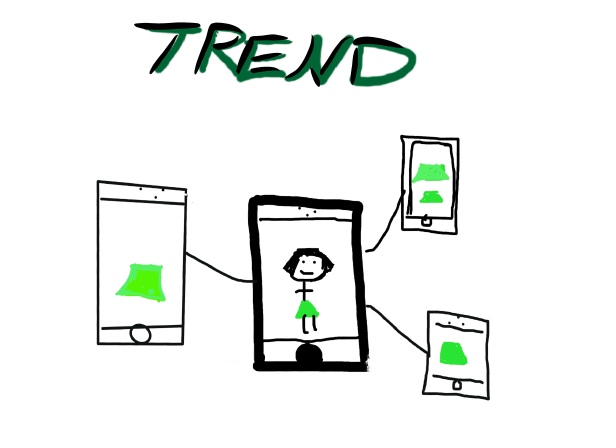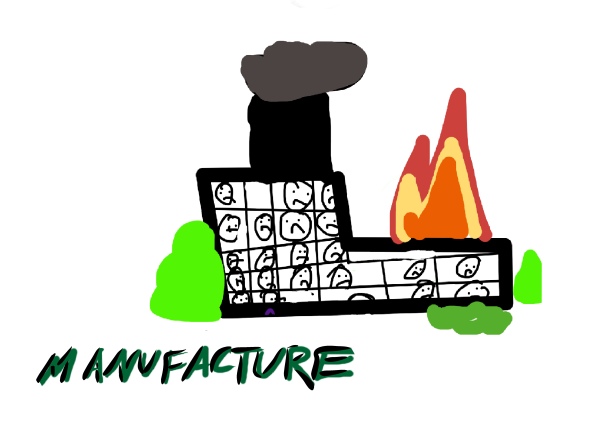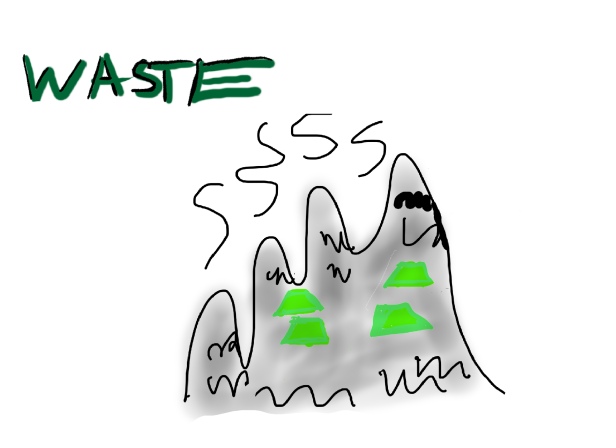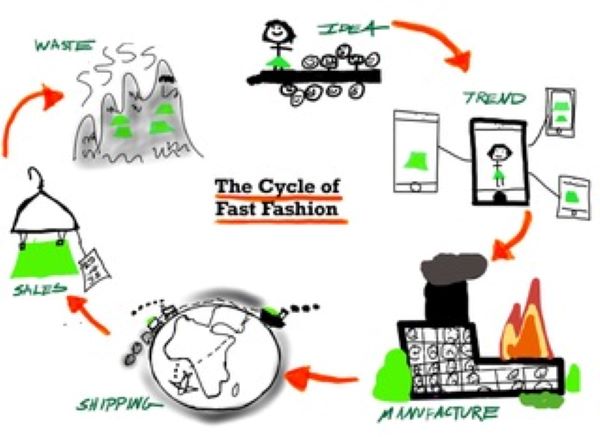A few weeks ago, I stood in front of a mirror in a dressing room and my face lit up. “That’s your style,” my grandma said when I showed her what I had put on. I was wearing a pink 1940s-style dress. Like my grandma said, it was completely me.
I’m embarrassed to say, but we spent $119 on clothes. However, I needed new clothes, and we were shopping at Buffalo Exchange, where you can buy and sell used clothes. If I had gone to a store like H&M, spending that much money would be unforgivable.
You see, H&M is a store that is a part of a not-so-funny little phenomenon called fast fashion. Fast fashion is a cycle of buying clothes that you don’t need, then quickly throwing them out. In the process, garment workers and the environment are sacrificed.

The Cycle of Fast Fashion

First in the toxic cycle of fast fashion comes the debut of the outfit on the runway or on a social media post made by celebrities. Made by high-end designers, it is high-quality, a new style, and expensive. The average person could never buy it.
However, they really, really want it. All over social media, this garment is becoming the hot new thing. But where will everyone get this super cool, super expensive article of clothing? This is where the big retailers move in like a snake closing in on its prey.

Now the fast fashion companies need to make the item. But with the ever-changing nature of the Internet, companies have to have it ready fast, before it loses its trendiness. So they employ hundreds of thousands of people, typically young women, from developing countries to work in half-destroyed buildings. They pay these workers very little, sometimes less than $1.
To get the fabric for the garment, the company hires farmers from those same developing countries. Farmers overuse toxic pesticides on plants, which pollutes groundwater and local rivers. This causes people to attain dangerous diseases, and since they don’t have enough money to pay for medication, all they can do is sit and suffer.

To grow cotton, which simply lives (quite literally) for water, farmers of course have to use a lot of water. This depletes our water supply, which is already in decline because of our rapidly-heating planet.

In the third step, the clothes need to be shipped. Using high-emission trucks and ships, they are delivered all over the world to various fast fashion stores. The gas from the vehicles stays in our environment, where it pollutes and heats up the world.
After the garments arrive in stores(which takes a few hours up to a few days after the item is first seen), people flock there to buy everything they want—but not necessarily what they need. Often, people buy excessive amounts of clothing. But what’s the point in all this spending?

The reason: the clothes are ridiculously cheap—like $5 cheap. When things are cheap, we feel like we can buy lots of things because buying lots of things must mean we’re rich. After all, only the rich can afford to buy 15 articles of clothing every week, right? But now, the average person can do it too.
However, after the buyer wears the garment a few times, they throw it away. Just like that, as if the garment is nothing, as if it’s just a piece of plastic.

But why? People see the new trend, and their “last-season” clothes. Now they aren’t cool, something we always have hated for some reason. But who cares if the clothes you wear aren’t cool to everyone else? Just be you!
These habits keep the fire of fast fashion burning. But eventually, it will be the world burning, not the cycle of fast fashion.
How to Break the Cycle
Luckily, there are things we can do to break the cycle. One solution is to buy clothes only when you need to. But make sure you like them because you might be wearing them for a long time!
Another answer to the problem is to only buy from sustainable brands or thrift/exchange stores, where you can buy and sell your clothes. A sustainable brand treats its workers fairly and tries to limit their waste and greenhouse gas emissions. Some examples of sustainable brands are ThreadUp (online app), Poshmark (online app), and Buffalo Exchange, an exchange store (hence the name) in Coolidge Corner, Brookline. Examples of fast fashion brands include Zara, H&M, Shein, Missguided, FashionNova, Asos, Boohoo, and Forever 21. These stores make clothes that are not meant to last.
Another perk of shopping at a thrift store is that they have many styles. You are sure to find something that is definitely you at a store with so many styles. After all, at a themed fast fashion store that only sells what’s trendy, I would’ve never been able to find my vintage dress!
So the next time you go shopping, keep in mind how your purchases impact so many different parts of our world.
Artwork by the Driscoll KEEP Club.
Cecilia Benitez is a student at the Driscoll School.
